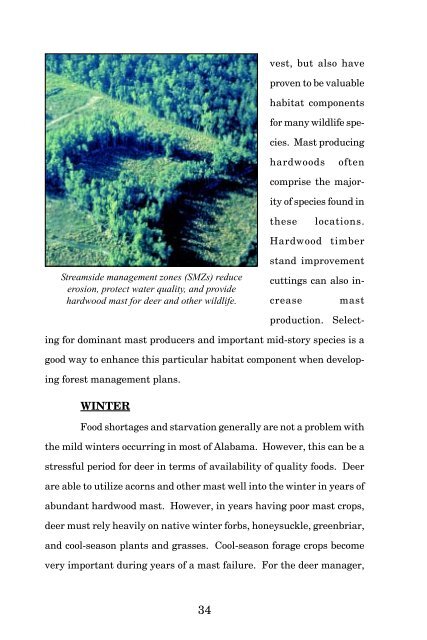Biology And Management Of White-tailed Deer In Alabama
Biology And Management Of White-tailed Deer In Alabama
Biology And Management Of White-tailed Deer In Alabama
Create successful ePaper yourself
Turn your PDF publications into a flip-book with our unique Google optimized e-Paper software.
vest, but also have<br />
proven to be valuable<br />
habitat components<br />
for many wildlife species.<br />
Mast producing<br />
hardwoods<br />
often<br />
comprise the majority<br />
of species found in<br />
these<br />
locations.<br />
Hardwood timber<br />
Streamside management zones (SMZs) reduce<br />
erosion, protect water quality, and provide<br />
hardwood mast for deer and other wildlife.<br />
stand improvement<br />
cuttings can also increase<br />
mast<br />
production. Selecting<br />
for dominant mast producers and important mid-story species is a<br />
good way to enhance this particular habitat component when developing<br />
forest management plans.<br />
WINTER<br />
Food shortages and starvation generally are not a problem with<br />
the mild winters occurring in most of <strong>Alabama</strong>. However, this can be a<br />
stressful period for deer in terms of availability of quality foods. <strong>Deer</strong><br />
are able to utilize acorns and other mast well into the winter in years of<br />
abundant hardwood mast. However, in years having poor mast crops,<br />
deer must rely heavily on native winter forbs, honeysuckle, greenbriar,<br />
and cool-season plants and grasses. Cool-season forage crops become<br />
very important during years of a mast failure. For the deer manager,<br />
34
















